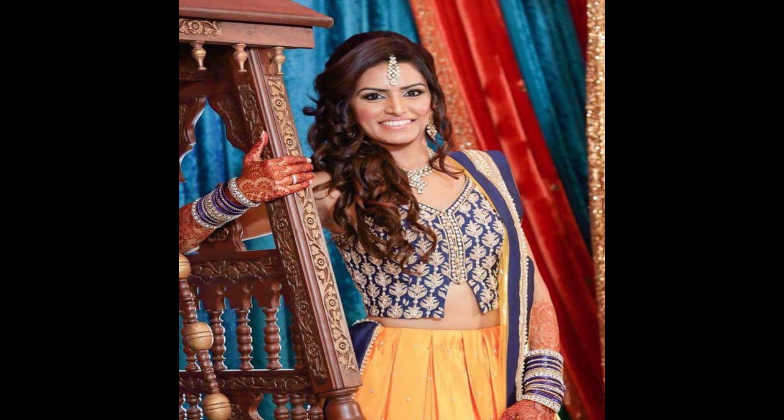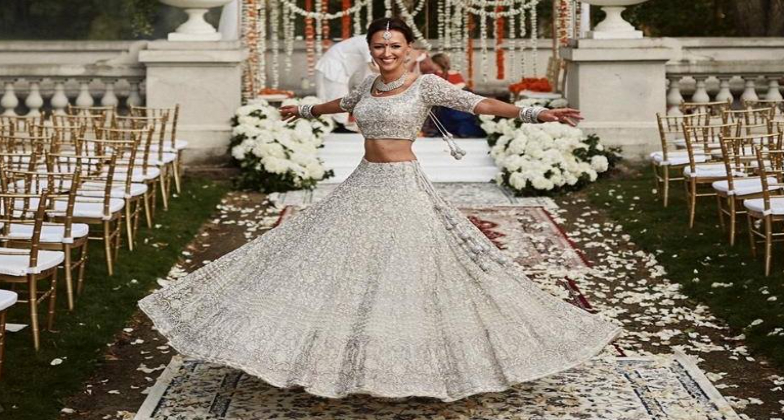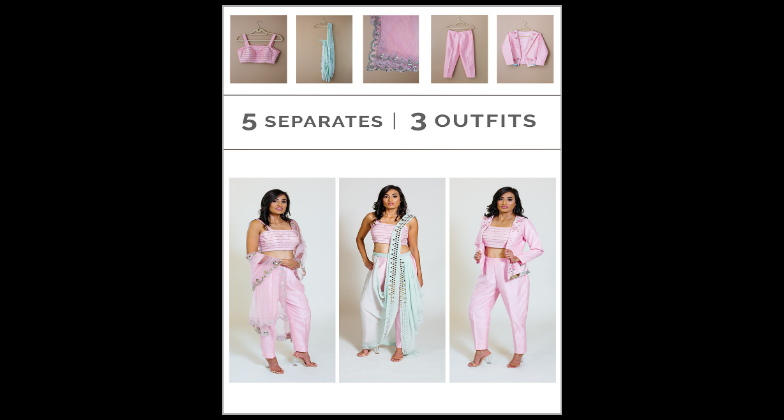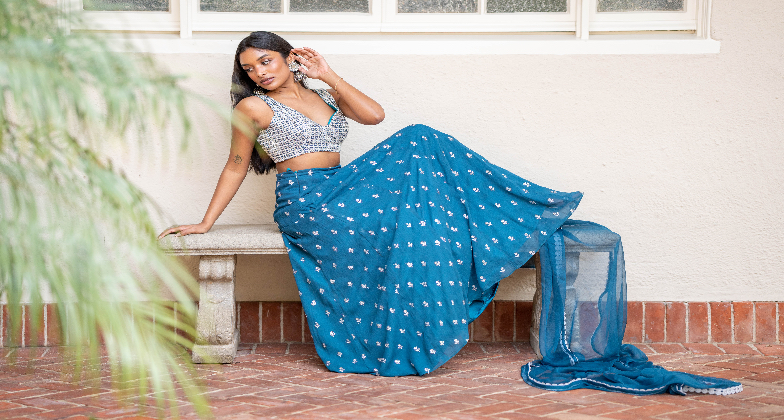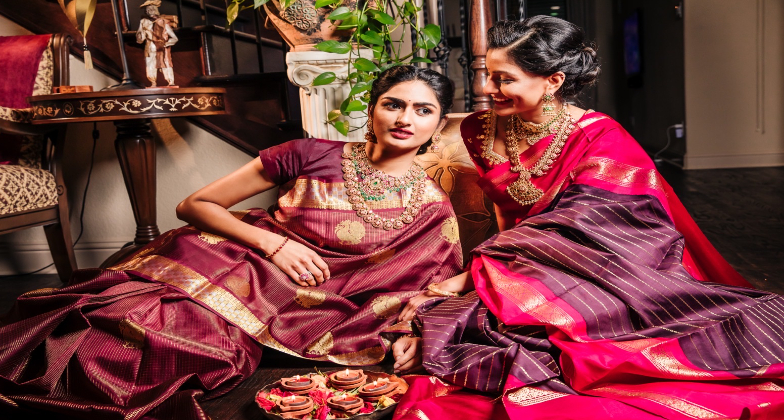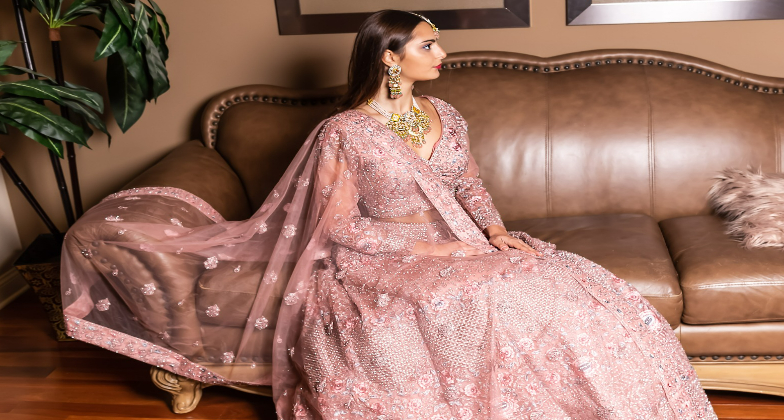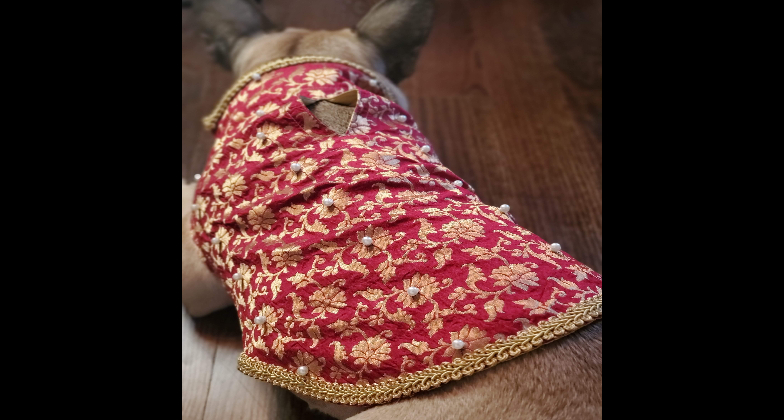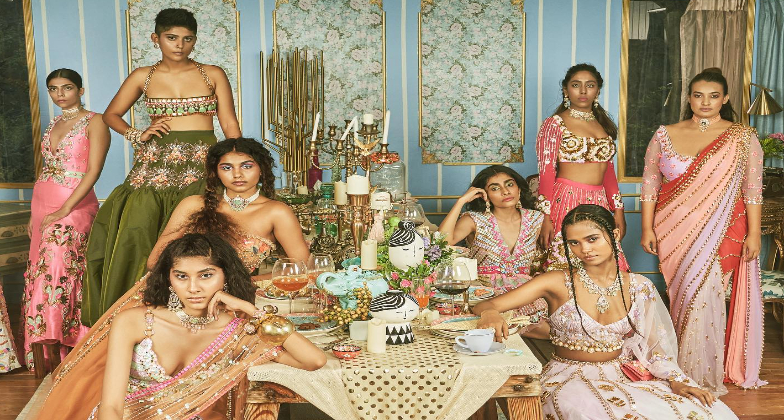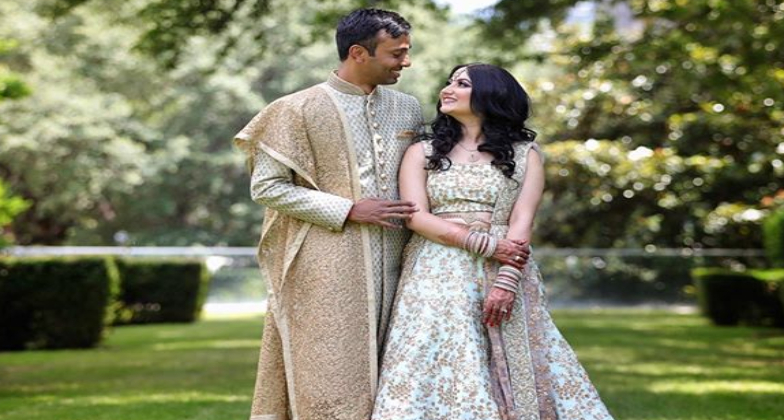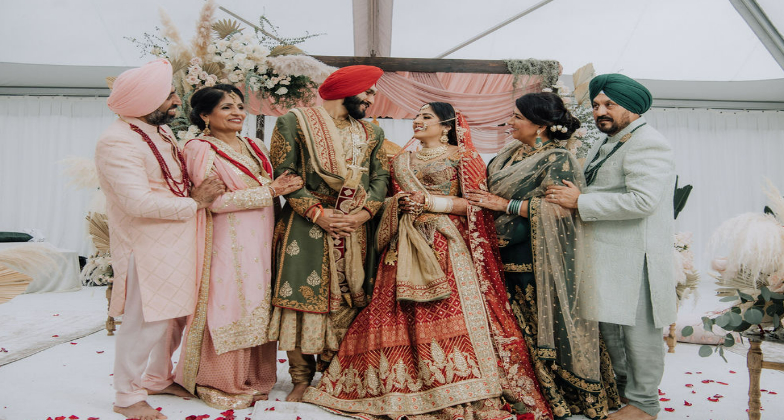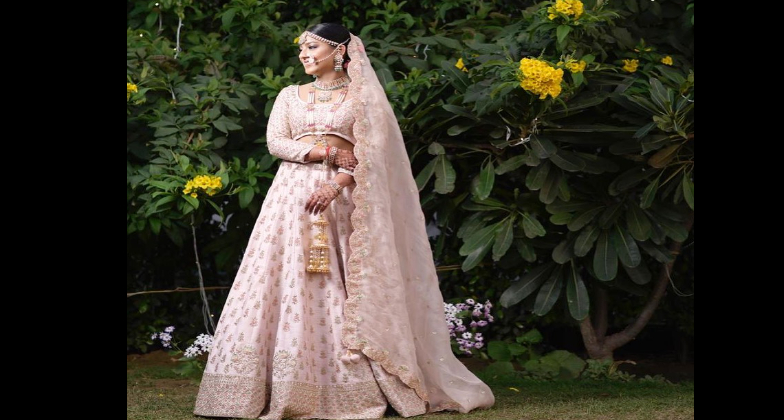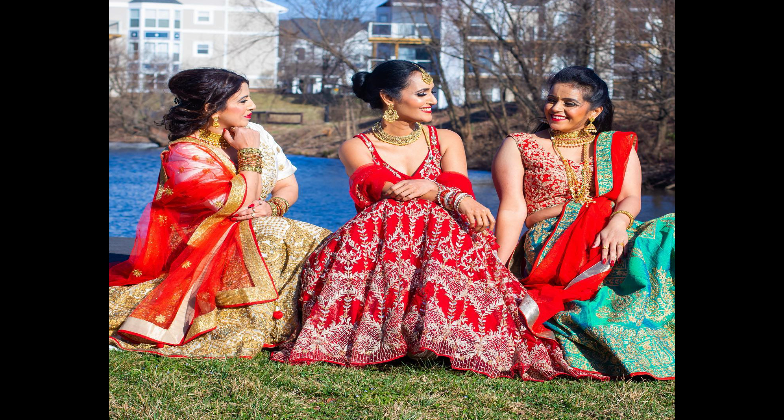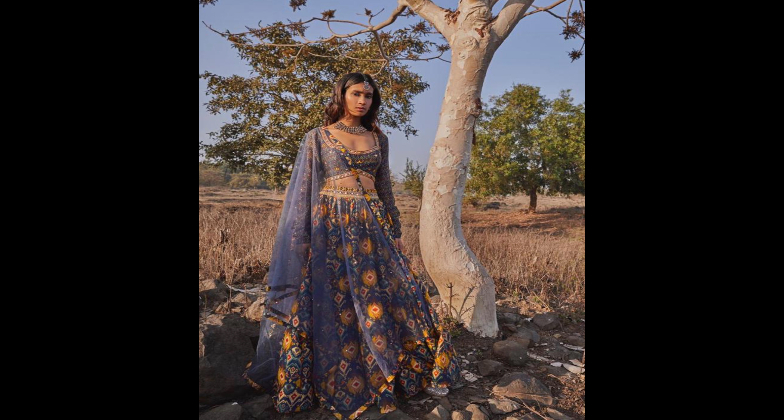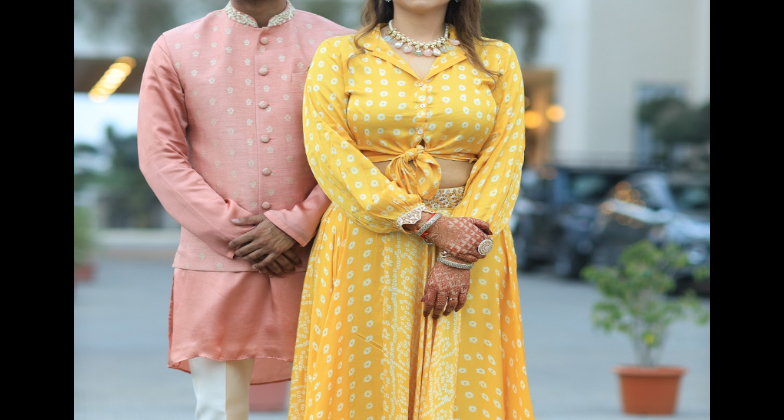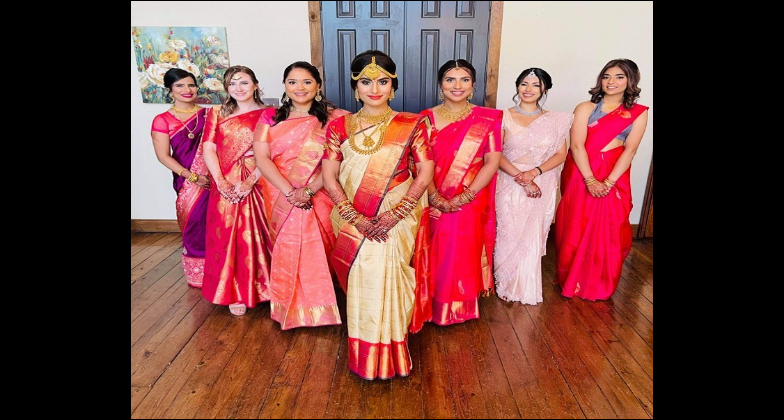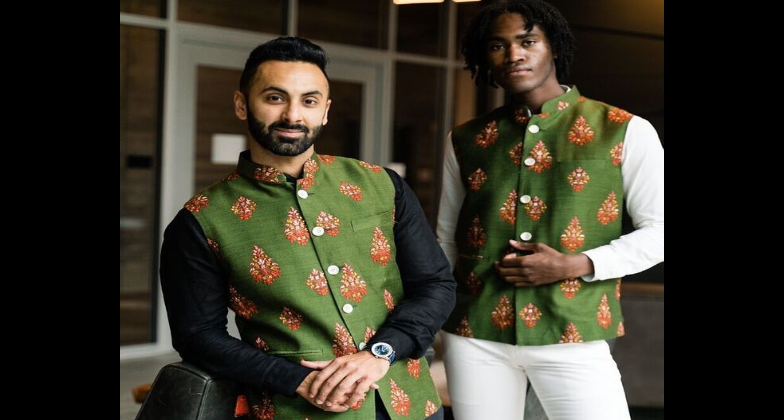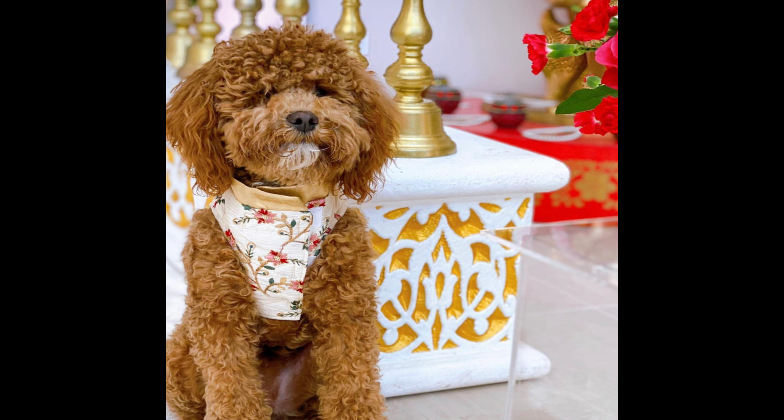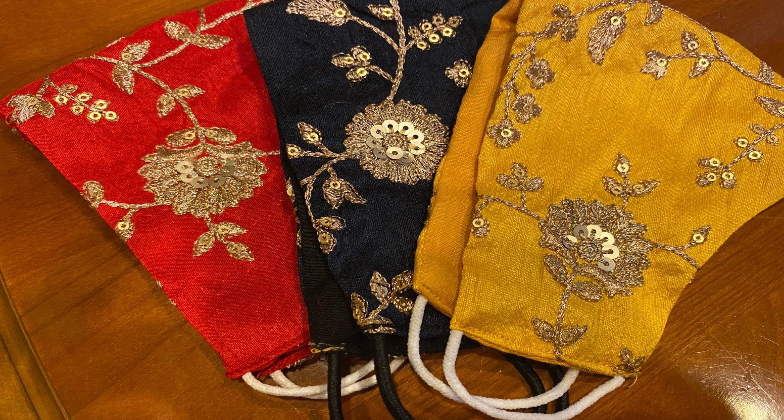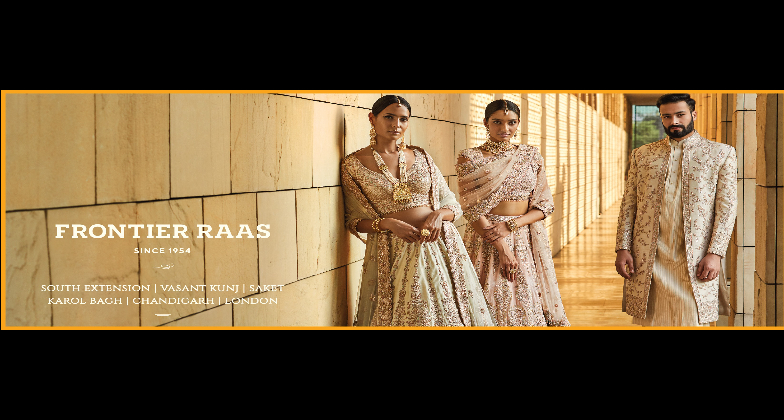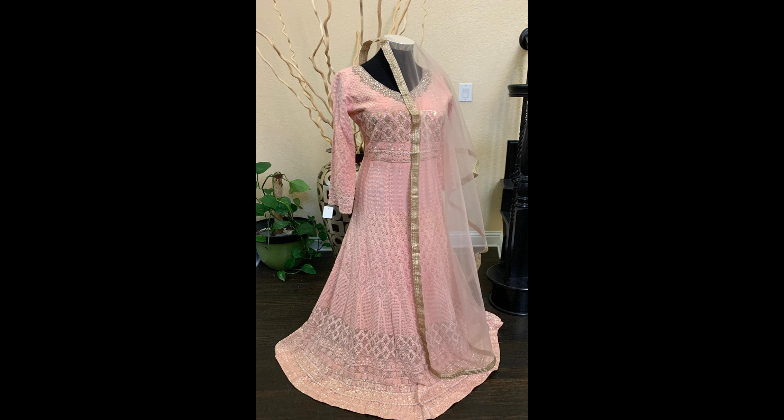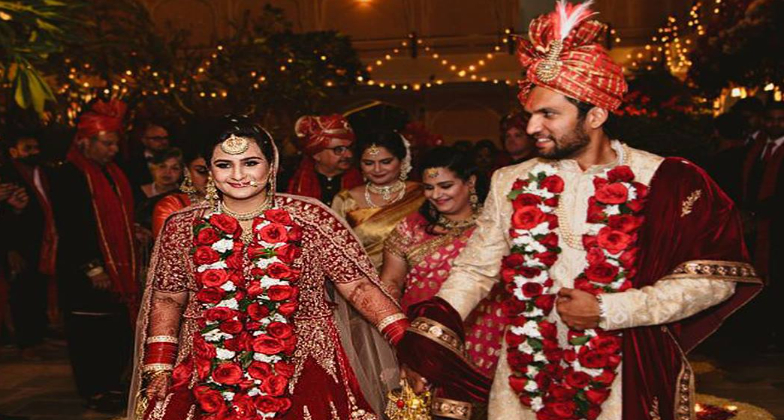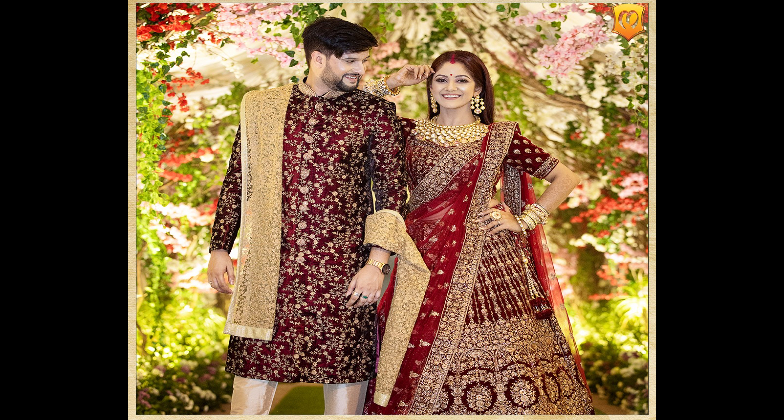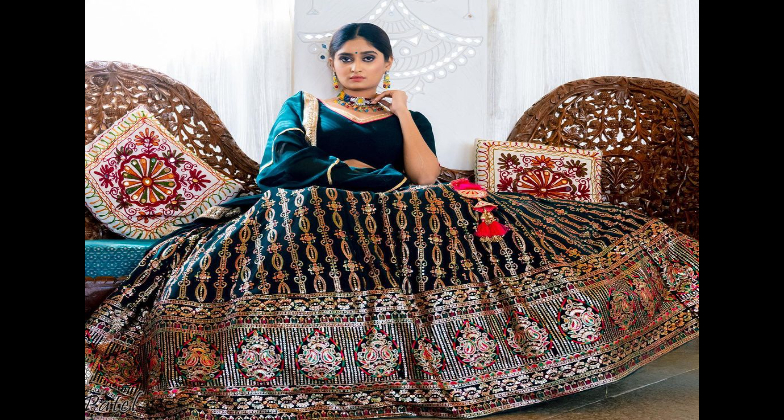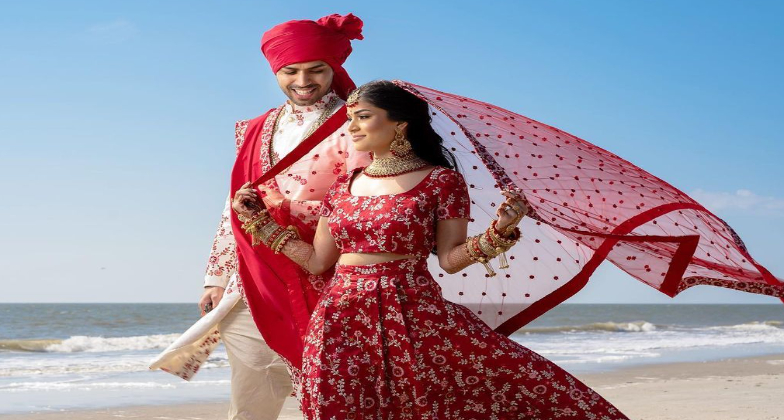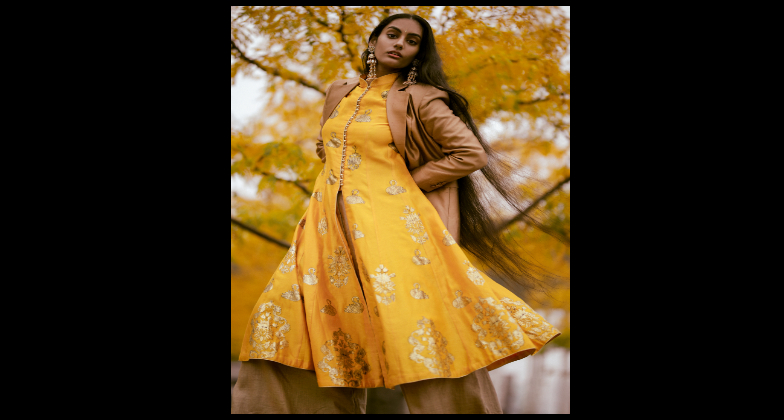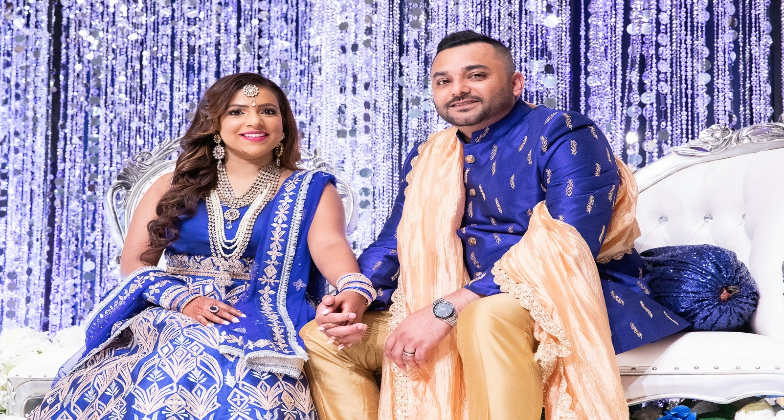Clothing
Top South Asian Wedding Clothing Vendors in Texas
For Desi Brides, Desi Grooms, Desi Bridesmaids, & Desi Groomsmen
The foundation of your wedding look will lay in your Indian hair & makeup and the intricate fabric of your bridal outfit! Otherwise known as “the dress”, what you don on your wedding day will elevate you and your partner into absolute royalty. Whether you follow the latest trends or opt for your respective traditional wear, your wedding dress, from sarees, lehengas, and gowns to kurtas and sherwanis, the selection will be a critical piece of your big day. At The Desi Bride, we've curated to top vendors to bring you your Indian wedding lehenga, Pakistani wedding or Nikkah outfit, and Desi clothes for your bridesmaids, groomsmen, and guests!
FAQ
What are the different outfit options for a Desi bride or groom?
The options for the modern-day Desi bride and groom wear are endless, but this list can be narrowed down dependent on your respective cultures. Here are some common wedding outfits across different south Asian cultures:
- Punjab/Haryana wedding clothes: Salwar/Suit (bride) or Sherwani (groom)
- Uttar Pradesh wedding clothes: Lehenga Choli (bride) or Sherwani (groom)
- Kerala wedding clothes: Kasavu or Silk Saree (bride) or Mundu (groom)
- Pakistan wedding clothes: Anarkali (bride) or Sherwani (groom)
- Nepal wedding clothes: Red Sari (bride) or Daura Suruwal (groom)
- Sri Lanka wedding clothes: Sari and Nalapata headpiece (bride) or Nilame outfit (groom)
- Bangladesh wedding clothes: Lehenga / Sari (bride) or Sherwani (groom)
- Christian wedding clothes: Silk Saree or White Gown (bride) and Button-Down Suit (groom)
Bride and grooms these days are even opting for fusion outfits, for mixed culture weddings. For example, a bride may opt for a salwar made out of traditional south-Indian silk, or an Indo-western white or gold lehenga!
What factors should I consider if I pursue a custom outfit route?
A custom outfit can provide you with creative freedom and flexibility that a pre-made dress can’t. Here are some important considerations:
- Cost of custom vs pre-made for the same designer: Custom outfits are usually more expensive as the designer takes your input, designs a bespoke outfit, and after getting your approval, may work with multiple suppliers to bring the sketch to reality. Given that this is a one-off process, it’s much less efficient for the designer and the entire supply chain, increasing the overall cost.
- Timeline for creation + alterations; Custom outfits can take 3-6 months or longer to design, make, and alter. Especially given the pandemic and with lower staffed factories, the entire process from design to delivery takes longer than it used to. We recommend planning your custom outfits well in advance of your wedding.
- Past examples of the designer’s work: While designers may have beautiful off-the-shelf pieces, we recommend always looking at their custom work before you decide to work with them on your couture lehenga or sherwani.
How much should my Indian bridal lehenga cost?
The answer is that it really depends. There is a vast range in pricing for lehengas and cholis. It’s important to know what you are going for.
- Designer: If you’ve been dreaming of a Sabyasachi or Manish Malhotra your entire life, then maybe you should splurge. This lehenga can cost you anywhere from $5K to $25K+. This doesn’t include the jewelry and accessories you’ll want to add on. It’s definitely a large investment.
- Couture: There are several new, mid-tier designers in the market, like Astha Narang, Falguni Shane Peacock, Anushree Reddy, and Harleen Kaur and both flagship and boutique stores like Frontier Raas and Studio D, which will give you a beautiful assortment to pick from and make you feel like royalty. These lehengas can cost anywhere from $1K to $5K+
- Budget: If you decide you’d rather spend this money on your venue, wedding favors or somewhere else, there are plenty of options <$1K as well at shops like Ram Kishan Sarees.
What do brides wish they had thought about before selecting their dream outfits?
While a lehenga can look beautiful, there is more you should think about before landing on the right outfit.
- While flared lehengas with can can look beautiful, make sure it’s not too heavy to dance in!
- While designers recommend adding 2-4 inch feels to your choli, if you are planning to dance for hours through the sangeet or reception, you may decide to go for shorter, more comfortable heels or even no shoes. Pick a height that you feel comfortable in without having to wear 4 inch heels all day or all night.
- Consider the approximate weather and pick material and sleeves that work for it. If you’re having a winter wedding outside, you may want to opt for a longer-sleeved blouse, whereas if you’re planning a summer sangeet, you probably want shorter sleeves and fabric that isn’t velvet.
As a South Asian groom, what should I think about before I look for my dream sherwani or kurta?
For Desi grooms, deciding on a style will help in the process of narrowing down colors and fabrics to one that best suits the groom. Figure out what you are most comfortable in. Do you want bold or loud colors, or do you want something more muted? You may want even different styles at your sangeet vs the wedding ceremony. A lot of modern millennials grooms wear an Indo-western or Indian + western fusion outfit. You can pick a color that showcases both tradition and modernity.
As a South Asian couple, how should we go about matching our outfits to look complementary?
While the easiest recommendation is to work with the same designers to create both of your outfits, there are also other ways to match your significant other:
- As a couple, start with a color palette in mind and connect your wedding outfits using complementary colors. Combining colors from the same color family (e.g., light pastels or ivories) can result in richer tones that boost the brightness of the outfit.
- Find a complementary color to your bride's sari, lehenga, or Anarkali. Then you can color coordinate to accent your outfit. Accents can be through embroidery, buttons, or accessories like a stole, jewelry, or even pocket square.
- Mix and match prints is a great strategy to extend the instant appeal of your current roster of outfits. When you combine more than one of the same print elements like a print shirt with a kurta or jacket, you'll get a bold twist on the design. Splashing a print from a lehenga on the kurta or Nehru jacket can be a fun way to have unique outfits that work together.
- "Finishing touches" are an essential idea that signifies the end of a wedding celebration. No matter how big or small, each detail has a significant significance for our guests. It's great to step up your game with high-quality accessories that can complete your full look, either in embroidery for a lehenga, dupatta, or shawl or as an accessory such as a stole, pocket square, or scarf.
How do I match my bridesmaids or groomsmen outfits with my lehenga, saree, or sherwani?
There are a couple of ways to match your outfits:
- Pick a base color that resonates with your wedding outfits and design the bridesmaids and groomsmen outfits with the same color swatch.
- Pick an embroidery from your wedding outfits and replicate the design on sherwani jackets or lehenga dupattas or blouses.
- Pick a contrasting color to your base wedding outfit colors. If your lehenga and sherwani are gold or pastel pink, maybe you opt for blue or dark pink kurtas and lehenga skirts for your bridesmaids and groomsmen. Alternately, you can use gold and pastel pink in their outfits and then add accessories like a stole or dupattas in a contrasting color.
Where can I find Indian bridesmaids' outfits in Texas?
On The Desi Bride, there are several vendors that customize bridesmaids' outfits from bridesmaids' sarees to lehengas. Check out Desi Is Me for bridesmaids' lehengas over $200 and Kynah for glam Desi bridesmaids outfits.
Should I travel to India to find my bridal lehenga or sari?
Selecting your dream wedding outfit(s) can be stressful. Given how many events South Asian weddings typically have, from the grah shanti to pithi to mehndi, sangeet, reception, and wedding a minimum sometimes, plus all of the outfits for your parents, siblings, bridesmaids, and groomsmen, it’s a lot for anyone to think through. A frequently asked question is whether you should go wedding shopping in India or Pakistan. We have highlighted the advantages and disadvantages of travel to the motherland to shop.
Pros
- Wedding shopping in Indian or Pakistan will definitely offer you more variety. In India, if you go somewhere like Delhi or Mumbai, you’ll find options from all over South India (Calcutta, Chennai, Bangalore, Kerala) and North India (Punjab, Rajasthan, Gujurat).
- Greater value for money. Labor and cost of materials are the two largest costs for your lehenga, saree, sherwani, kurta etc., so going shopping in the motherland is always cheaper (not considering travel costs). Outfits can be 20%+ cheaper than what you would get in Texas, New Jersey, L.A., or Chicago.
- Save money if you are buying a larger volume of outfits (e.g., for the family as well). Especially if you are planning to buy all of your outfits and outfits for parents, siblings, bridesmen, groomsmen, etc., the discount for shopping in Indian or Pakistan will quickly add up and save you lots of money that you can invest in other places like décor or a food truck!
- While designers and boutiques in the U.S. try to carry the latest trends, there’s always a slight lag in the current trends in India or Pakistan and what you might find here. Many designers or boutique owners travel to motherland 1-2 times a year to co-design outfits with their preferred manufacturers, so just the time between travel, shipping, and selling can mean that there may have been a new trend that popped up (not that this really matters, but if you want the lehenga from Katrina Kaif’s latest film or Alia Bhatt’s wedding lehenga replica, you might not find it in the U.S. right away).
- While in the U.S. you might get a glass of champagne for saying yes to the dress, you get treated like a royal bride in India. When you shop in Chandni Chowk and the shop owner thinks you might make a purchase, they will offer you samosa chaat, filter coffee, fresh jalebi – you ask for it, and they’ll make sure they bring it out!
Cons:
- Shopping in motherland can be stressful. You have to know exactly where to shop and how to bargain (the markup can often be 30-50% in a market like Chandni Chowk). If you’re in Delhi or Mumbai, you may be in a car for hours trying to get from one shopping area to the next. And finally, there are street hawkers, trying to encourage you to buy everything from outfits to bangles to kitchen supplies. For someone not used to shopping in India or Pakistan, this can feel intimidating.
- Usually, when couples or families go shopping in India or Pakistan, they don’t have the luxury of months to look for and decide on wedding outfits. The 1-2 week trip can feel chaotic as you are visiting many shops in a short amount of time and have to make rapid decisions.
- Traveling to South Asia is a commitment. It’s a long-distance trip that can take 1-2 days one way and is an investment in the fare. There are several Dallas and Houston-based boutiques that design and carry bridal lehengas and sherwanis and will only take your 30 minutes to a couple of hours to get to.
- Finally, you really need a relative or friend who knows the market to take your around. Large cities like Delhi, Mumbai, Calcutta, and Lahore have many different stores and markets. It’s not easy to navigate if you’re not familiar with wedding shopping and where to look for outfits. Typically, there are different stores for lehengas, sarees, gowns or anarkalis, sherwani, kurtas, bangles, artificial jewelry, pooja saman etc…it takes multiple trips and an understanding of which store to go to for what item.
How can I reuse my wedding outfit after my wedding?
The Desi Bride published an article on how to host a more sustainable wedding with a section about clothing. Your bridal clothes will certainly be costly, so it’s fair to want to make the most out of your purchase and finds ways to reuse your outfits from a cost perspective but also to leave less of a footprint on the world. Some suggestions to repurpose your outfit are included below.
- Professionally preserve the outfit to pass down to the next generation. There are companies that preserve your outfit or even frame your lehenga, so you can keep it for years to look back at.
- Reuse the material for another outfit (or two) with the help of a seamstress or designer. Brides often turn their saree into a lehenga or a lehenga into a gown, so they can rewear pieces of their wedding outfits to other occasions
- Mix and match your outfits for other events. Wearing your bridal lehenga or saree to someone else’s wedding may make you feel like you’re showing up the other bride, but you can always mix and match pieces to make them lighter and appropriate to wear to other events. For example, you might match a red blouse with a white or gold choli or pink lehenga skirt with a gold or black blouse.
- Professionally clean the outfit and sell it. Brides on a budget will thank you! There are platforms like Little Brown Diary – Buy and Sell that help you find a new buyer for your clothes.
- Resell your outfit to other brides or grooms through Bombay Trade Co or Stylhawk
I've bought my dream Indian wedding lehenga. What else do I need to think about to look good on my wedding day?
While your wedding lehenga or sherwani for the groom are what really make your sangeet, wedding, and reception looks, it's important to add the whole package. Make sure you find matching jewelry like a choker and bangles and hair accessories like a maang tikka as well as comfortable shoes. Finally, your bridal hair & makeup elevates your look. It's worth investing in a top hair & makeup artist in Houston or wedding makeup artists in Dallas. Make sure you look at The Desi Bride's hair & makeup artists to book your artist today.
Who are the top Desi wedding lehenga and sherwani vendors in Texas?
Click the below links to start exploring the best wedding outfit vendors. Find vendors for your Desi bridesmaids' sarees and handsome groomsmen's kurtas.
